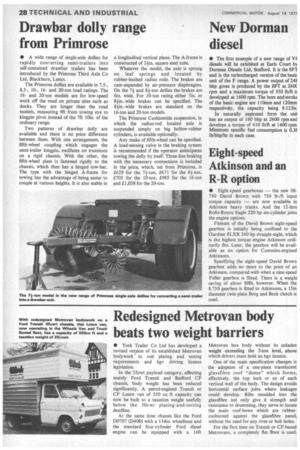Redesigned Metrovan body beats two weight barriers
Page 30

If you've noticed an error in this article please click here to report it so we can fix it.
• York Trailer Co Ltd has developed a revised version of its established Metrovan bodywork to suit plating and testing requirements and hgv driving licence • legislation.
In the 35cwt payload category, affecting mainly Ford Transit and Bedford CF chassis, body weight has been reduced significantly. A petrol-engined Transit or CF Luton van of 550 cu ft capacity can now be built to a taxation weight usefully below the 30cwt plating-and-testing deadline.
At the same time chassis like the Ford D0707 (D400) With a 134in. wheelbase and the standard four-cylinder Ford diesel engine can be equipped with a 16ft Metrovan box body without its unladen weight exceeding the 3-ton level, above which drivers must hold an hgv licence.
One of the main specification changes is the adoption of a one-piece translucent glassfibre roof "dome" which forms, effectively, the top inch or so of each vertical wall of the body. The design avoids horizontal surface joins where leakages could develop. Ribs moulded into the glassfibre not only give it strength and resistance to drumming, they serve to locate the main roof-bows which are rubbercushioned against the glassfibre panel, without the need for any rivet or bolt holes.
For the first time on Transit or CF-based Metrovans, a completely flat flbor is used.


































































































